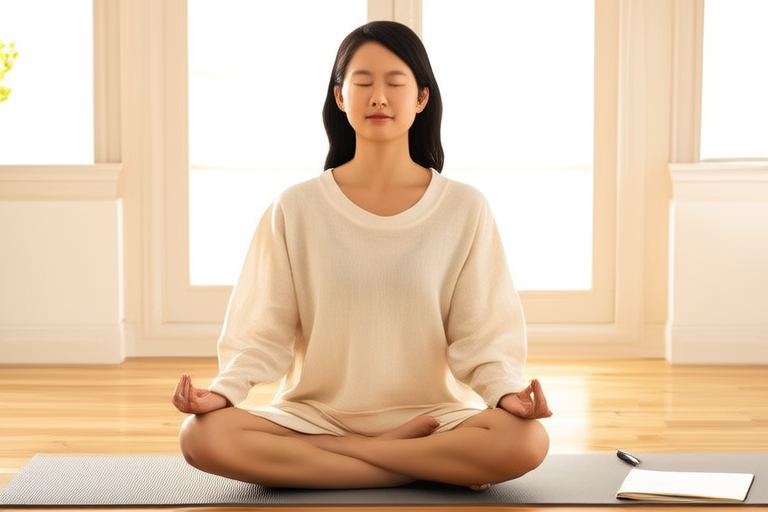Mastering Mindfulness: Your Ultimate Guide to Stress Management
In today’s fast-paced world, stress has become an almost inevitable part of life. From work deadlines to personal responsibilities, the pressures we face can take a toll on our mental and physical well-being. This is where mindfulness comes in—a powerful tool that can help us manage stress and regain control over our lives. By cultivating awareness of the present moment, mindfulness allows us to respond to challenges with clarity and calmness rather than reacting impulsively. In this guide, we will explore what mindfulness is, why it is crucial for stress management, and how you can incorporate it into your daily routine.
What is Mindfulness?
Mindfulness is the practice of paying attention to the present moment without judgment. It involves being fully aware of your thoughts, emotions, bodily sensations, and surroundings as they occur. Rather than getting caught up in worries about the future or regrets about the past, mindfulness encourages you to anchor yourself in the here and now. This simple yet profound shift in perspective can have a transformative impact on your mental health and overall quality of life.
The roots of mindfulness trace back to ancient Buddhist meditation practices, but its principles have been adapted for modern use in various fields, including psychology, education, and healthcare. Research has shown that mindfulness can reduce stress, improve focus, enhance emotional regulation, and even boost physical health. For anyone seeking a natural and effective way to manage stress, mindfulness offers a practical and accessible solution.
Actionable Steps for Practicing Mindfulness
If you’re new to mindfulness, don’t worry—it’s easier to start than you might think. Below are some key techniques to help you get started:
1. Mindful Breathing
Breathing is something we do automatically, but when practiced mindfully, it becomes a powerful anchor to the present moment. Here’s how to practice mindful breathing:
- Find a quiet space where you won’t be disturbed.
- Sit comfortably with your back straight and your hands resting on your lap.
- Close your eyes if you feel comfortable doing so.
- Take a deep breath in through your nose, counting to four.
- Hold your breath for a count of four.
- Exhale slowly through your mouth for another count of four.
- Repeat this cycle for five to ten minutes, focusing solely on the sensation of your breath entering and leaving your body.
If your mind wanders, gently bring your attention back to your breath without criticizing yourself. Over time, this practice can help you develop greater focus and relaxation.
2. Meditation
Meditation is one of the most well-known mindfulness practices, and for good reason. It helps train your mind to stay present and reduces the noise of constant thinking. Here’s a simple meditation exercise:
- Choose a quiet spot and sit in a comfortable position.
- Set a timer for five to ten minutes (or longer if you prefer).
- Close your eyes and take a few deep breaths to settle into the moment.
- Focus on a single point of attention, such as your breath, a mantra (a calming word or phrase), or a visualization like a peaceful scene.
- When distractions arise—and they will—acknowledge them without judgment and return your focus to your chosen point of attention.
Consistency is key with meditation. Even a few minutes each day can yield significant benefits over time.
3. Body Scans
A body scan is a mindfulness technique that involves systematically bringing awareness to different parts of your body. This practice can help release tension and promote relaxation. To perform a body scan:
- Lie down on your back in a comfortable position, with your arms at your sides and your palms facing up.
- Close your eyes and take a few deep breaths to center yourself.
- Begin by focusing on the top of your head. Notice any sensations, such as warmth, tingling, or tightness.
- Slowly move your attention downward, scanning each part of your body—your forehead, eyes, cheeks, jaw, neck, shoulders, arms, hands, chest, abdomen, legs, and feet.
- If you notice areas of tension, imagine breathing into those spots to release the tightness.
- Continue until you’ve scanned your entire body, then take a few moments to rest in stillness before opening your eyes.
This practice can be done in as little as five minutes or extended to twenty minutes for deeper relaxation.
4. Mindful Journaling
Writing can be a powerful way to process emotions and cultivate mindfulness. Mindful journaling involves reflecting on your experiences without judgment. Here’s how to get started:
- Set aside ten to fifteen minutes in a quiet space.
- Grab a pen and notebook, and write freely about whatever is on your mind.
- Focus on describing your thoughts, feelings, and sensations as they are in the present moment.
- Avoid editing or censoring yourself—this is a judgment-free zone.
- If you’re unsure where to begin, try prompts like “What am I feeling right now?” or “What am I grateful for today?”
Mindful journaling can help you gain clarity, process difficult emotions, and foster a deeper connection with yourself.
Tips for Integrating Mindfulness into Daily Life
Mindfulness doesn’t have to be confined to formal practices like meditation or journaling. You can weave it into your everyday activities to create a more mindful lifestyle. Here are some tips:
- Eat Mindfully: Pay attention to the taste, texture, and aroma of your food. Chew slowly and savor each bite.
- Walk Mindfully: Focus on the sensation of your feet touching the ground, the rhythm of your steps, and the sights and sounds around you.
- Pause Throughout the Day: Take short breaks to check in with yourself. Close your eyes, take a few deep breaths, and notice how you’re feeling.
- Engage Fully in Conversations: Listen attentively to others without planning your response while they’re speaking.
- Create Mindful Routines: Incorporate mindfulness into daily tasks like brushing your teeth, washing dishes, or showering by focusing on the sensory experience.
Addressing Common Challenges and How to Overcome Them
Starting a mindfulness practice can come with its own set of challenges. Here are some common obstacles and strategies to overcome them:
- Restlessness: If you find it hard to sit still, start with shorter sessions and gradually increase the duration. You can also try walking meditation as an alternative.
- Wandering Thoughts: It’s normal for your mind to wander during mindfulness exercises. Instead of fighting it, gently guide your attention back to the present moment.
- Impatience: Mindfulness is a skill that takes time to develop. Be patient with yourself and celebrate small victories along the way.
- Lack of Time: Even a few minutes of mindfulness can make a difference. Integrate it into your existing routines, such as during your morning coffee or evening wind-down.
- Skepticism: If you’re unsure about the benefits, approach mindfulness as an experiment. Commit to practicing consistently for a month and observe any changes in your mood, focus, or stress levels.
The Long-Term Benefits of Mindfulness
Mindfulness is not just a quick fix for stress; it’s a lifelong practice that can profoundly impact your mental and physical health. Some of the long-term benefits include:
- Reduced Stress: Regular mindfulness practice lowers cortisol levels, the hormone associated with stress, leading to a calmer and more balanced state of mind.
- Improved Mental Health: Studies show that mindfulness can alleviate symptoms of anxiety, depression, and other mental health conditions.
- Enhanced Focus and Productivity: By training your brain to stay present, mindfulness improves concentration and decision-making skills.
- Better Physical Health: Mindfulness has been linked to lower blood pressure, improved sleep quality, and a stronger immune system.
- Greater Emotional Resilience: Practicing mindfulness helps you respond to challenges with equanimity, reducing reactivity and increasing emotional stability.
Ultimately, mindfulness empowers you to live more intentionally and authentically. By fostering a deeper connection with yourself and the world around you, it opens the door to a richer, more fulfilling life.
Conclusion
Mindfulness is a simple yet profound practice that can transform the way you manage stress and navigate life’s challenges. Whether you choose to start with mindful breathing, meditation, body scans, or journaling, the key is consistency and patience. As you integrate mindfulness into your daily routine, you’ll likely notice improvements in your mental clarity, emotional resilience, and overall well-being. Remember, mindfulness is a journey, not a destination. Embrace the process, and enjoy the peace and balance it brings to your life.










